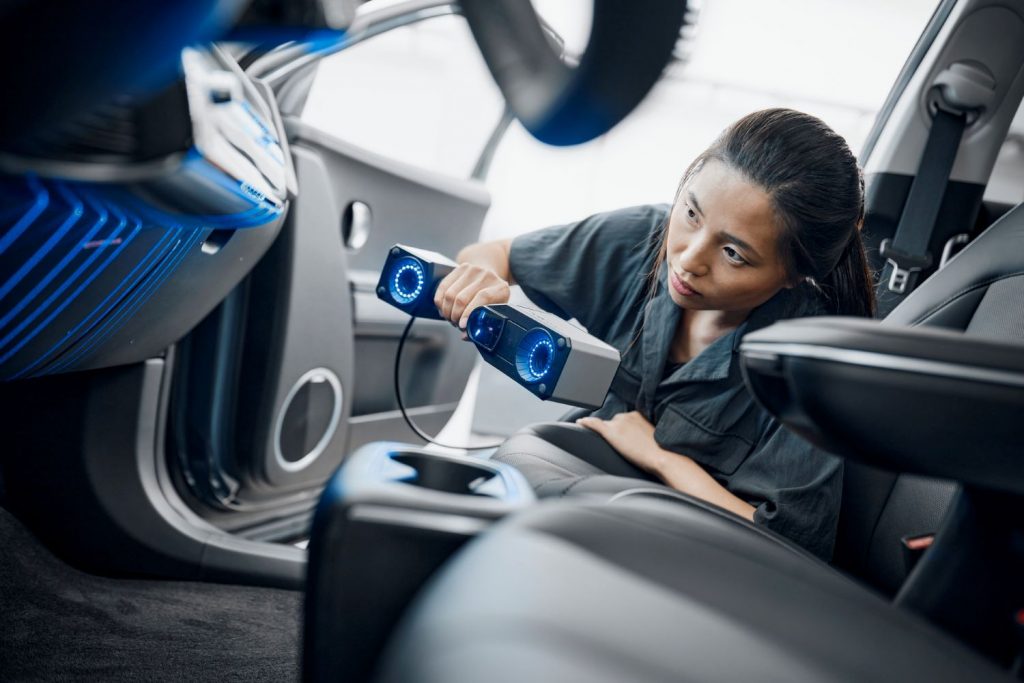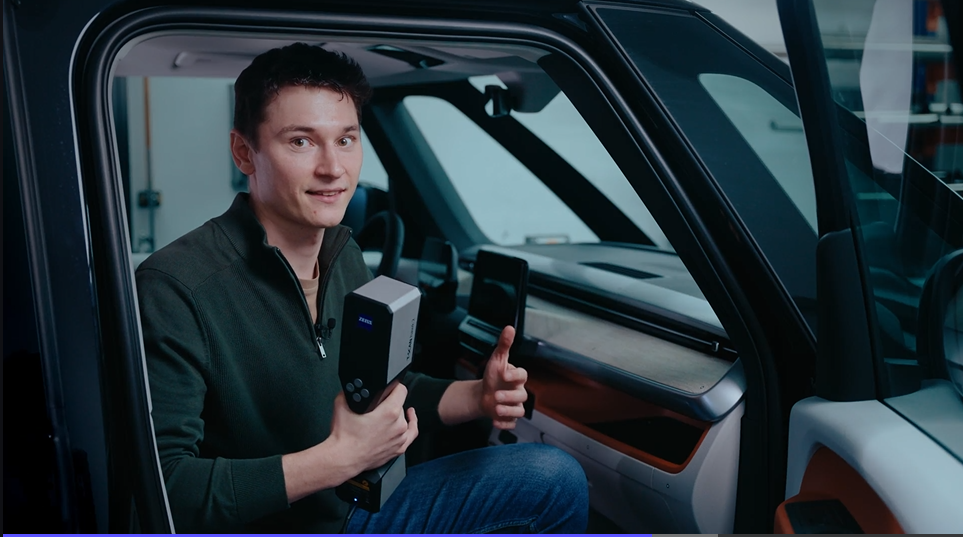Why use 3D scanning for quality control in the automotive industry?
The automotive industry has a long history of using manual inspection techniques, such as gauges and coordinate measuring machines (CMMs), to ensure quality control. However, these methods are time-consuming and can be prone to errors. 3D scanning technology provides a faster, more accurate and reliable alternative to these traditional methods.
Rapid prototyping
3D scanning assist in the creation of accurate digital models of physical prototypes, which can then be used for further design and testing.
Reverse engineering
Reverse engineering processe is supported by 3D scanning when reverse engineering existing parts. This allows for the creation of accurate digital models that can be used for replacement or modification.
Quality control
Optical 3D scanning methods can be used to inspect the accuracy of manufactured parts and assemblies, identifying defects and deviations from design specifications.
How is 3D scanning used for quality control in the automotive industry?
The various components and materials used in the automotive industry need to be inspected for their quality to ensure maximum safety. With 3D scanning, quality control involves just a few steps:
1. Planning
The first step is to identify the parts or assemblies that require inspection, and to develop a plan for the scanning process. This includes selecting the appropriate scanning technology, determining the required level of accuracy, and identifying any potential issues that may arise during the scanning process.
2. Scanning
Once the plan is in place, the scanning process begins. Depending on the type of part or assembly being scanned, different types of scanning technologies may be used, such as structured light scanning or laser scanning. The scanning process involves capturing a series of images or data points, which are then combined to create a 3D model of the part or assembly.
3. Analysis
Once the 3D model is created, it is compared to the design specifications to identify any defects or deviations. This analysis can be done using specialized software, which can highlight areas of the model that require further inspection or modification.
4. Reporting
The final step is to create a report based on the analysis, which can be used to identify areas for improvement in the manufacturing process, or to identify defective parts that need to be replaced or repaired.
ZEISS T-SCAN hawk 2 for complex automotive components, materials and tasks
The process can be easily carried out with the ZEISS T-SCAN hawk 2 in combination with the inspection software of the ZEISS Quality Suite. They offer the optimum conditions for the wide range of applications in the automotive industry. You want to know how you can use it? Check out our How-to video to learn more:
How to use a 3D scanner in confined spaces
In this How to Roel is scanning complex and hard to reach areas of a van interior. Whether for inspection or design purposes – the ZEISS T-SCAN hawk 2 is the perfect fit for extracting accurate and complete dimensions in confined spaces. Got any questions on 3D scanning? Contact us via support@HandsOnMetrology.com
Advantages of using 3D scanning for quality control in the automotive industry
There are several advantages to using 3D scanning for quality control in the automotive industry.
The increased accuracy is a main benefit coming from 3D scanning. The method provides more accurate and precise data than traditional manual techniques.
Furthermore, it accelerates inspection times due to fast preparation and easy operation. 3D scanning can be completed much faster than manual inspection techniques, reducing production time and costs.
The improved visualization is another advantage from using optical measuring methods since scanning provides a detailed 3D model of the part or assembly being inspected. It can be visualized from any angle and can help identify defects that may be missed with traditional inspection techniques.
3D scanning is considered to be a non-destructive inspection technique. This means that the part or assembly being inspected is not damaged or destroyed during the inspection process.

